Traffic Stop While Driving Armed? Plan Ahead for Less Stress
Eve Flanigan 02.25.21
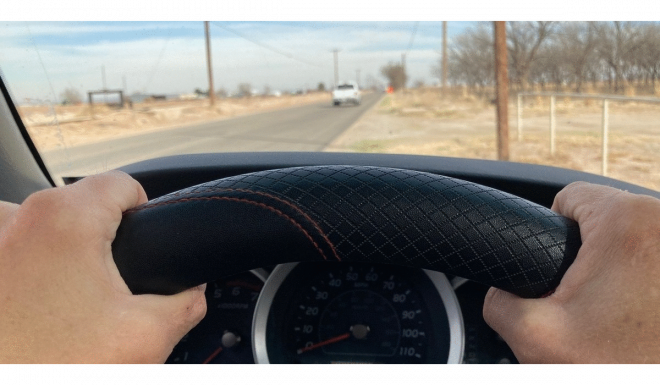
With lots of new gun owners in the nation, there will be lots of guns transported in automobiles. And that means there’s a possibility of a traffic stop that may or may not go smoothly for the gun owner. Here, I’d like to share some tips and gear to avoid common mistakes made by gun-toting civilians during traffic stops. The ultimate goals are keeping yourself, passengers, and the officer(s) safe, with the interaction being as hassle-free as possible.
Traffic Stop – Know the Law
Each state has different laws concerning the carry and transportation of firearms in a vehicle. It’s your responsibility to know those laws and to comply with them. Laws change frequently. A great resource to consult before you travel is handgunlaw.us. This site is updated in a timely manner, doesn’t require a membership fee, and is as replete as can be for the subject matter.
Laws to consider could encompass any requirements for the location of guns or ammunition during transport, whether a concealed carry permit is required to be in your possession if carrying concealed in the car/truck, and the nature of any “duty to inform” an officer that you’re armed or at least hold a license to be armed in public.
A segment of the gun-owning populace is set on catching police in the act of behaving with what they perceive as prejudice against gun rights and the Second Amendment. They have a right to communicate their thoughts and boast about having guns. This article isn’t for them. This article is for those of us who intend to protect ourselves against violent crime and are not interested in drawing attention to our armed status.
Traffic Stop – Discreet Carry is Smart Carry
While your concealment license status may be disclosed by the communication system used by the agency an officer represents, your armed status is better off not being visible from outside the car. If you’re carrying off-body, the sight of a gun through the window of your unattended car may present irresistible temptation to a thief.
I’m making the assumption that you’re already in the habit of locking your vehicle when there’s no one in it. If that assumption is wrong, it’s advisable to adopt door-locking as a means of keeping hands off your gun that have no business touching it. That could, of course, include curious children as well as would-be thieves.
If there are no guns visible in the car and if you’re not obligated by the terms and conditions of your permit to inform an officer of your armed status, there is rarely a reason to volunteer that information. Most people think they’ll feel better if they tell the truth about being armed when asked.
With all due respect to law enforcement, keep in mind that not all police consider it okay for a non-officer to be armed, and some are not aware of the minutiae of laws related to car carry as you hopefully are or will be. Voluntary disclosures by peaceful people lawfully carrying guns have led in some instances to rough treatment by the officer. If this happens to you, follow orders and don’t argue. If you’re aware of the pertinent laws and the officer overstepped his or her authority, the time to complain is after the event and to a supervisor or chief within that officer’s department.
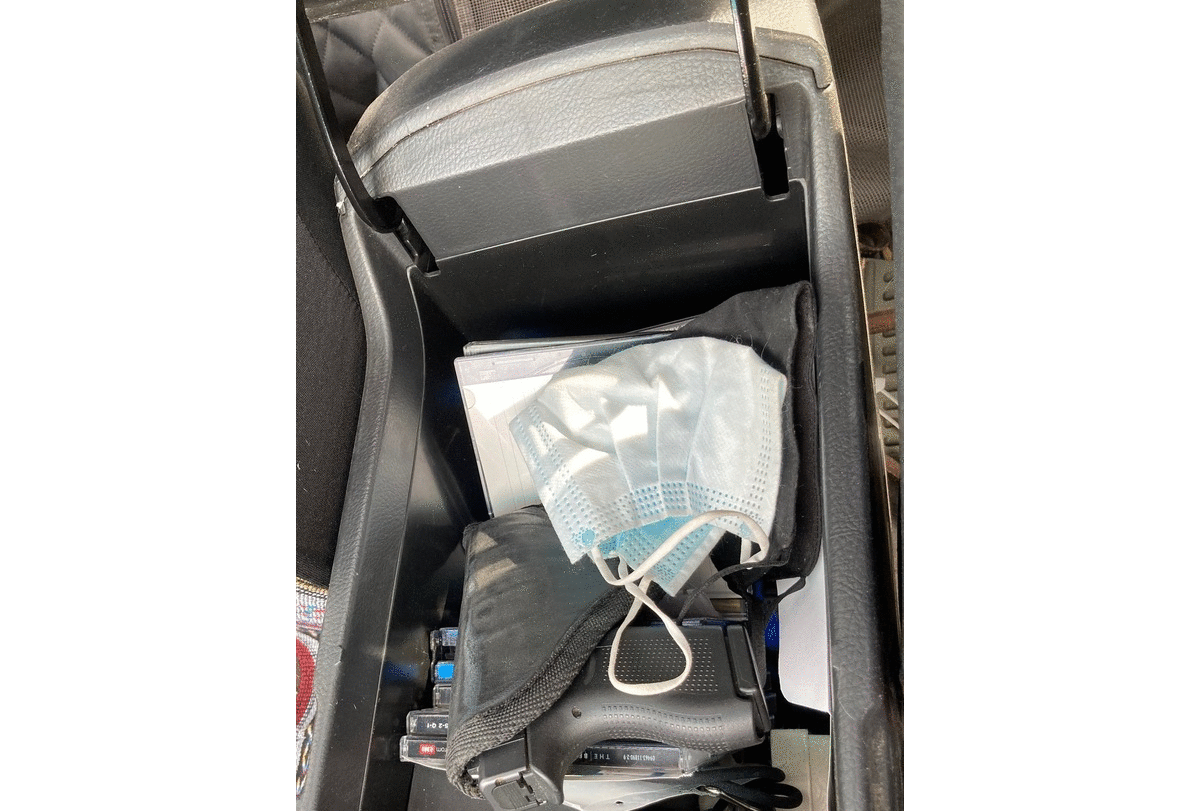
Just as with being prepared for self-defense, a little forethought and consideration of gear goes a long way toward success where a traffic stop is concerned. The following are some suggestions for less stressful roadside interactions with police.
Traffic Stop – Have the Stuff Where it Belongs
We’ve already established that your sidearm, and any other guns you’re transporting, should be invisible, or nearly so, to anyone looking into your vehicle from outside. Assuming it’s legal in your jurisdiction, or if you’re willing to bear the potential legal consequences of breaking unjust laws, your gun should also be quickly accessible in case of emergency. Options for making it so are a topic for another day.
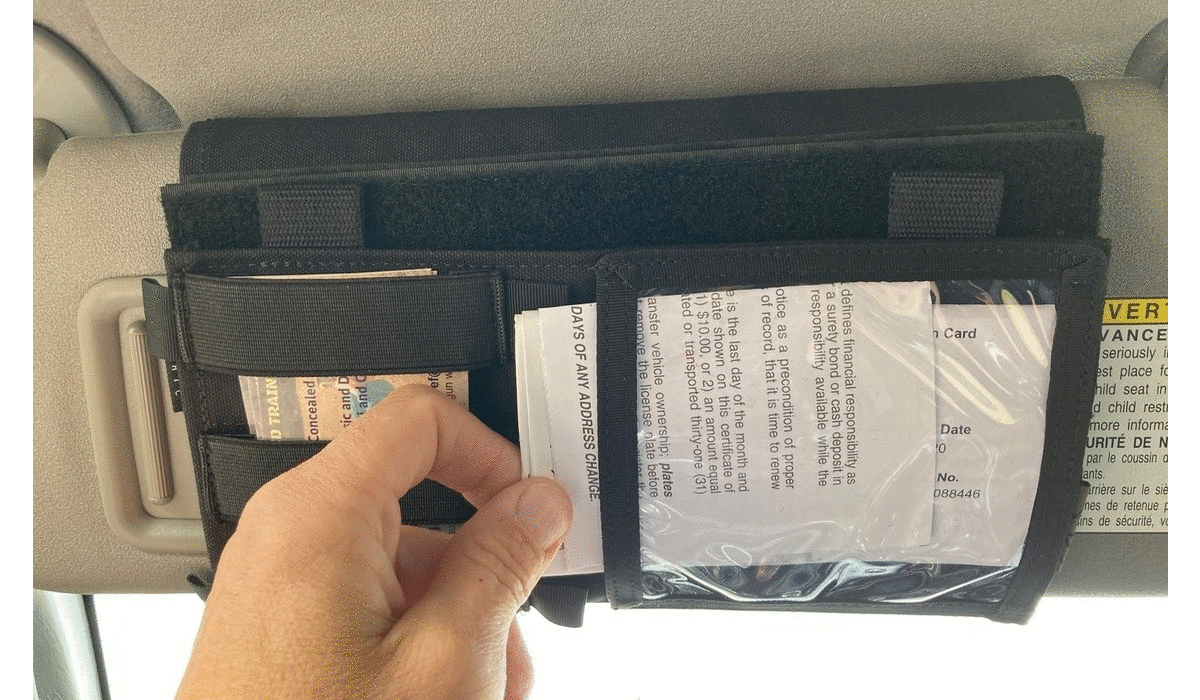
Many people make the mistake of carrying a handgun and the documents needed to show police in the same place. That’s asking for trouble and can understandably cause alarm to an officer when the console cover or glovebox door is opened and a gun becomes visible, not to mention escalating the situation when the driver reaches into that same area to get those registration and insurance papers. The gun and documents must be stored separately.
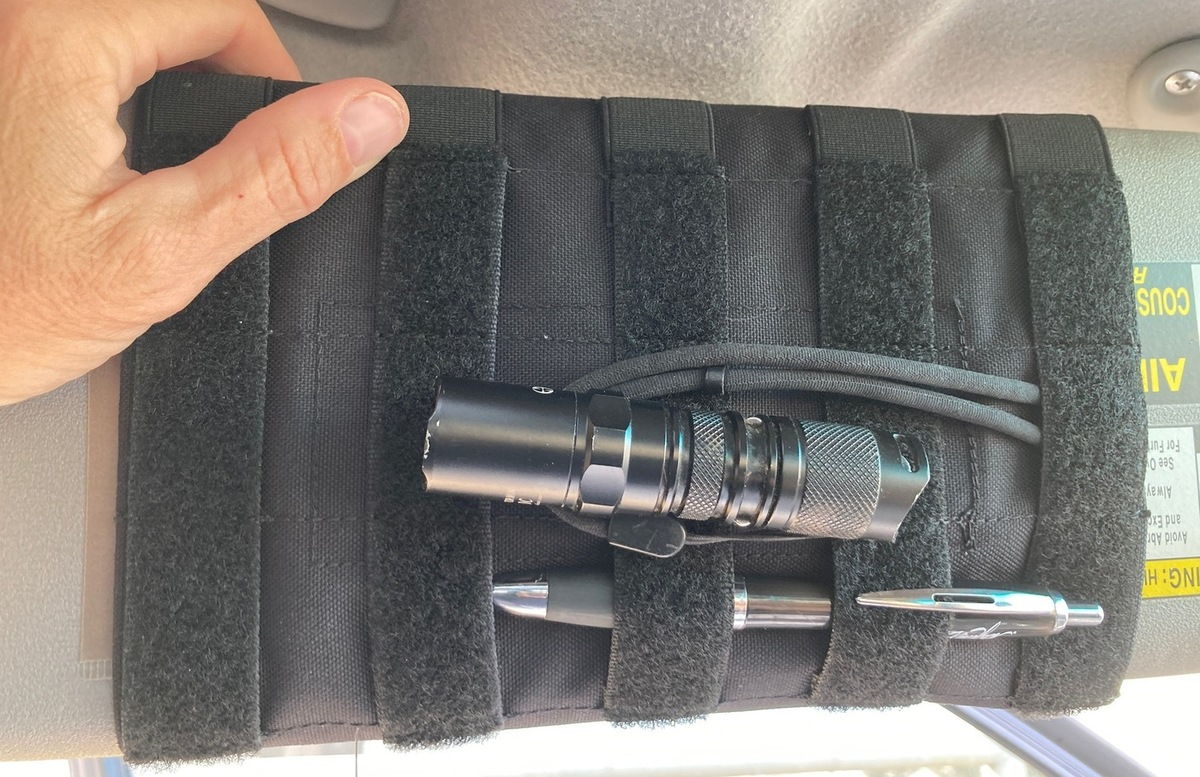
Traffic Stop – Gear Matters
Any holster you use should cover the trigger guard and prevent the gun from falling out of it. There are other considerations for holsters too, but let’s discuss those important documents which are really needed during a traffic stop.
Your driver’s license will generally be in a wallet or purse. Have it in those containers in a place that’s easy to get to. Get it first and as soon as you’ve come to a stop. Reaching around in the car is to be avoided as much as possible, but some of it’s probably inevitable to get that DL out, so do that early on.
Insurance and registration are ideally stored where you can easily access them while keeping hands visible. The logical first choice of locations, then, is the sun visor. Fortuntately, there are products made for storing items on the visor that don’t distract the driver or detract from the car’s looks. One good example is the TT Sunshade Cover from Tasmanian Tiger. This Codura visor wrap fits visors 11 to 14 inches in circumference. It secures well with Velcro. In addition to the window pouch that can hold important papers (name and address facing in for best privacy, of course), there’s MOLLE on the reverse side that can keep sundry items at hand. The price is $21.95 by direct order.
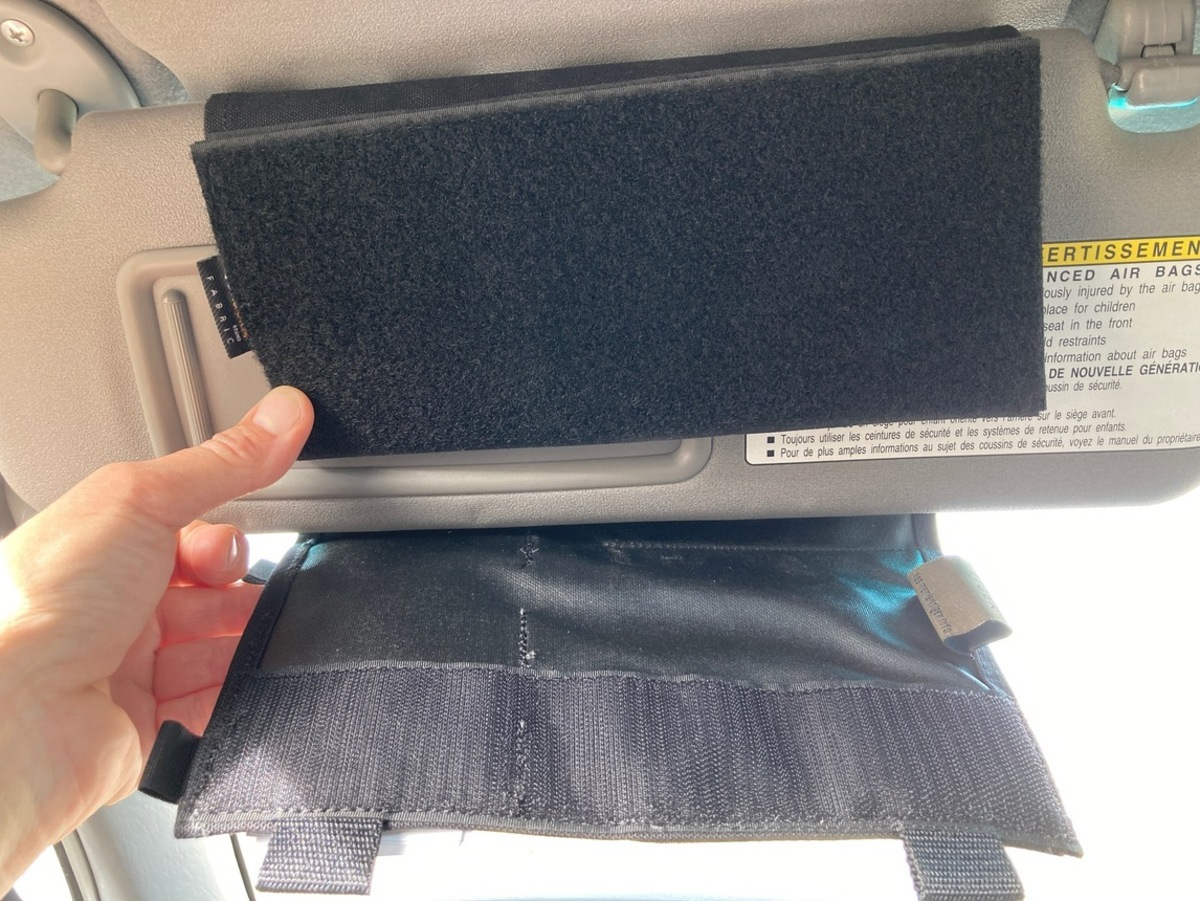
A little planning ahead can minimize traffic stop stress and avert trouble for both concealed carriers and police officers. It’s too late to plan when you see those flashing lights in the rearview mirror. It’s easiest to not break the law at all, of course, but a traffic stop is bound to happen sooner or later. Spend a little time now planning access to important documents and making the best of that unpleasant moment.